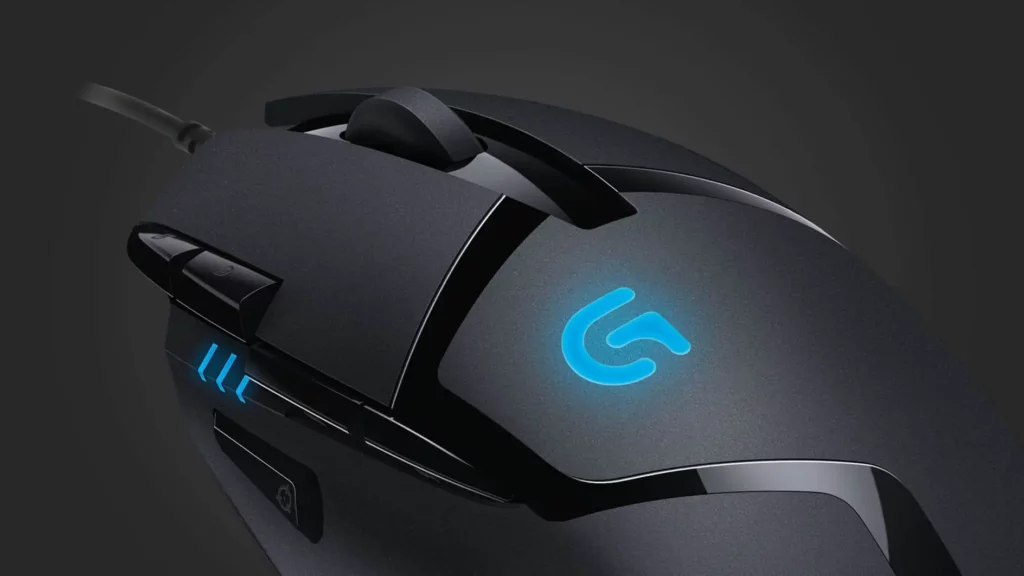Finding the Lightest Gaming Mice matters for any pro gamer because it prevents wrist pain resulting from extensive gaming. At the same time, it better keeps pace with your twitchy mouse flicks, hence aiding you in the competitions.
However, weight isn’t the only factor for buying a gaming mouse. For this very reason, we’ve done thorough research among dozens of the top lightest gaming mice and listed the Glorious Model O as our top pick for comfort seekers.
It has in-built switches to adjust DPI and other technical features, provides you with hand ventilation, and is super lightweight. Its braided ultra-flexible cord also makes it durable and easier to use. And it’s still affordable.
Cooler Master MM710 will also fulfill your expectations with its 16K DPI, low click latency, and splash-proof properties if you want a more economical option. And for wireless fans, we recommend the Logitech G Pro, which is as fast as corded models.
Keep reading to learn about these products in detail and other top lightest gaming mice on our list.
Lightest Gaming Mice at a Glance
| Rank | Brand | Connectivity | DPI Settings | More Details |
|---|---|---|---|---|
| 1 | Glorious Model O | Wired | 12K | Check Price |
| 2 | Razer Viper Ultimate | Wireless | 20K | Check Price |
| 3 | Logitech G Pro | Wireless | 25K | Check Price |
| 4 | Cooler Master MM710 | Wired | 16K | Check Price |
| 5 | FinalMouse Ultralight 2 | Wired | 3K | Check Price |
1. Glorious Model O—Best Overall
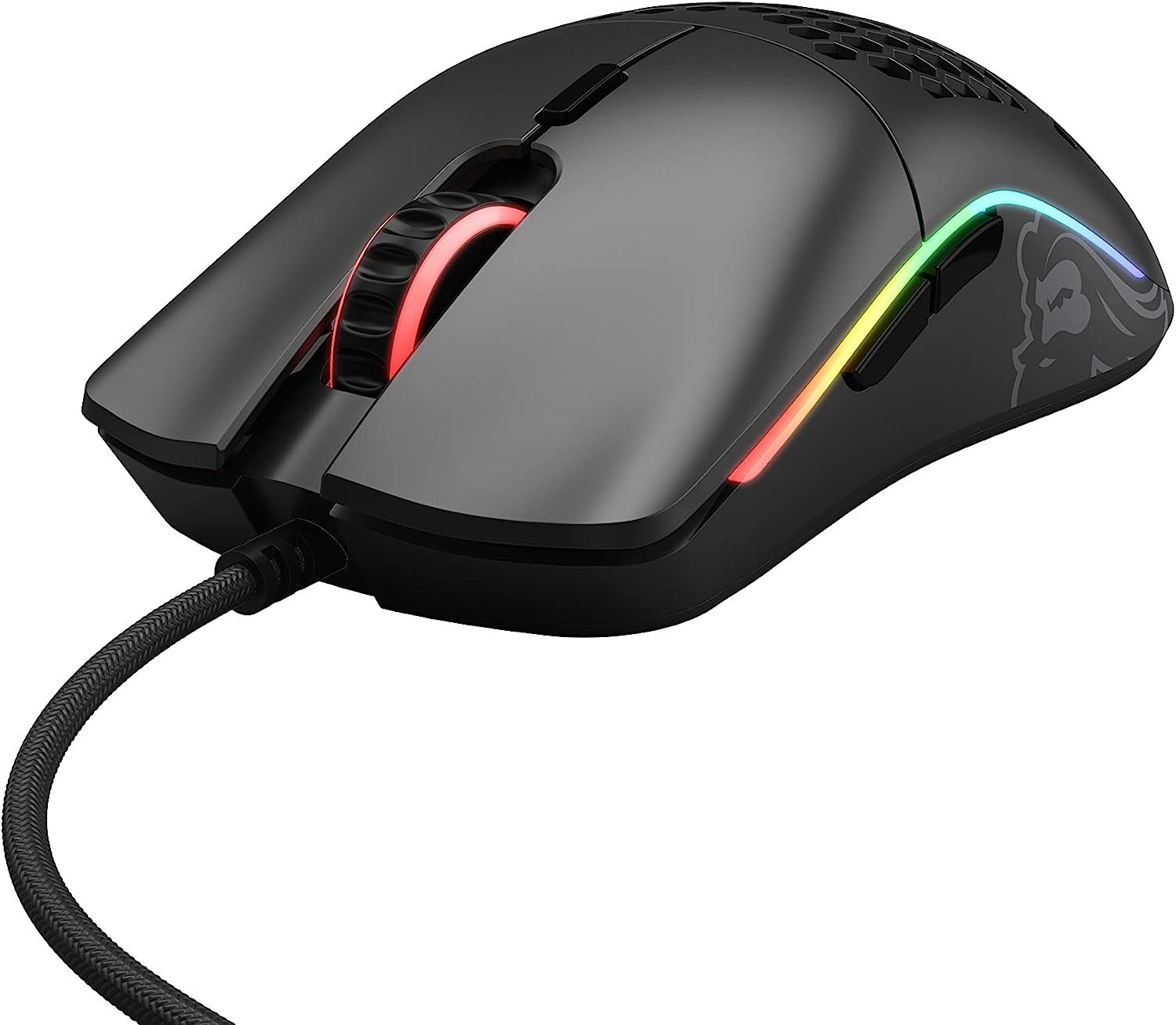
| Weight | 2.36 oz. |
| Connectivity | Wired |
| DPI Settings | 12,000 |
Check on Amazon
Glorious Model O is a quality gaming mouse with a lot of adjustable features.
It packs an efficient 12000 DPI sensor with a high polling rate, which you can set using the Glorious software. The RGB lighting on the sides, bottom, and inside the chassis is also customizable.
Its honeycomb design provides airflow to prevent sweating palms, while the holes won’t disturb you in gaming. Besides, the grid pattern makes it one of the lightest gaming mice at 2.36 oz. The only issue is that dust particles might accumulate in those holes, making you clean them more often.
Having a lightweight, long, and flexible Ascended cord, this Glorious model gives you a wireless-like experience. The body curves adapt to your hand shape for easier grip. Plus, the mouse features %100 pure PTFE Skates that glide like a snake, no matter what pad you’re using.
Even if you have small hands, you can opt for the Minus version, which is almost half as long and 10 grams lighter.
The well-built Omron switches will do a great job for up to 20 million clicks. Plus, if you face any sticky button issues within three months of purchase, you can replace the whole package. The two-year warranty is another proof of durability.
However, here’s a minor downside for palm grippers: It comes in a low-profile design so that you may find your wrist scraping on the table after long hours of play. Besides, the left-side clickers may get in your way if you have big thumbs.
Other than that, Glorious Model O offers you a comfortable, fast, and precise experience at an affordable price, which is why it’s made its way to the top of our list.
- Precise 12000 DPI settings
- Modifiable RGB lighting
- Low click latency
- Hand ventilation
- Available in two sizes
- Smooth flickering Skates
- Two-year warranty
- Three-month replacement
- Two-meter cable
Cons
- Not for palm grippers or all-day players
- The perforated shell can cause dust buildup
2. Razer Viper Ultimate—Fastest Response Time
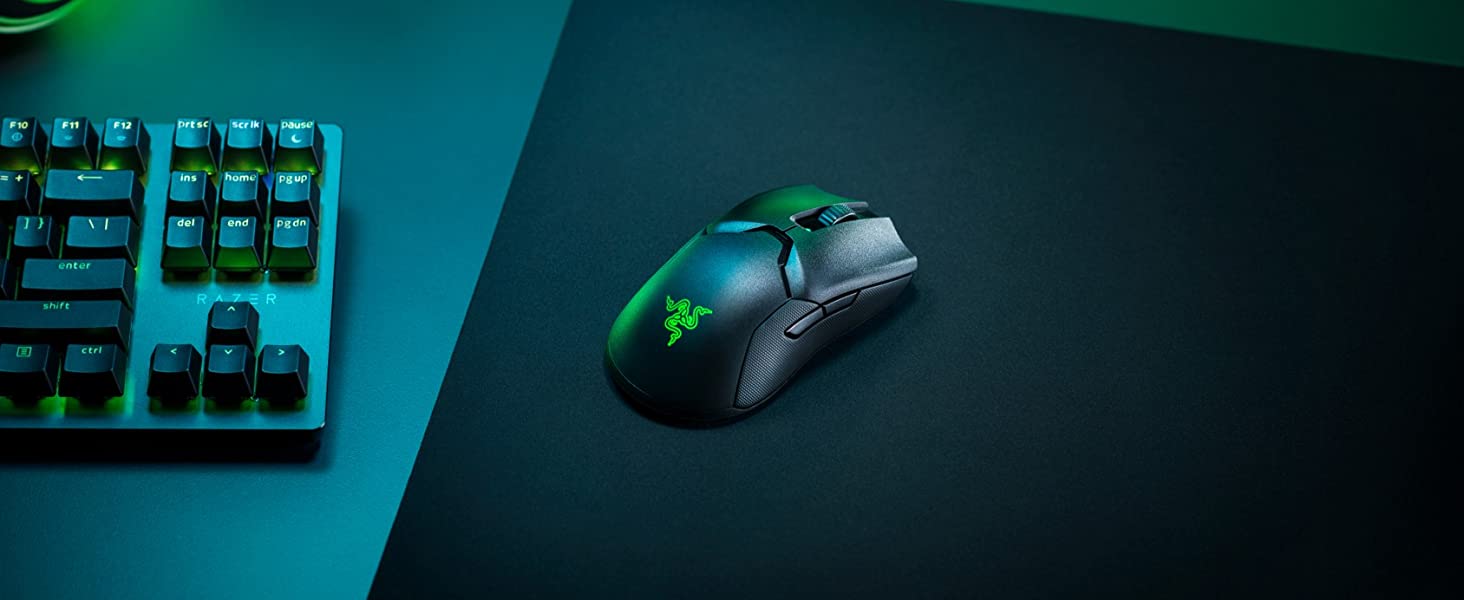
| Weight | 2.61 oz. |
| Connectivity | Wireless |
| DPI Settings | 20,000 |
Check on Amazon
With a 20K DPI optical sensor, Razer Viper Ultimate is best for hardcore gamers who prioritize responsiveness.
Its optomechanical keys accelerate your clicks by omitting the debounce latency, and the 240Hz RF dongle sends signals to your system with impressive speed and precision.
Razer Viper Ultimate comes with a charging base, which has increased its price a bit. But it’s worth the money because it juices up your mouse in less than two hours and gives you several days of playing—up to 70 hours. Partly, this extended battery life owes itself to the lack of LEDs.
All in all, if you need a quick mouse to keep up with your nimble reflex clicks during a competition, Razer Viper Ultimate may be your best choice. But notice that it’s not a customizable mouse. There are no fingertip grips to stick on it or a lot of programmable buttons.
If you need a less costly option, the wired version of this mouse will also do the job at just 2.43 oz. and 16K DPI. The Razer Viper 8KHz is another similar model that reports your movements to PC 8,000 times per second.
- Non-ventilated design
- Lag-free experience
- 20K DPI sensor
- 240Hz polling rate
- Long battery life
- Suitable for all hand sizes and styles
Cons
- Few customized features
- A bit expensive
3. Logitech G Pro—Best Wireless
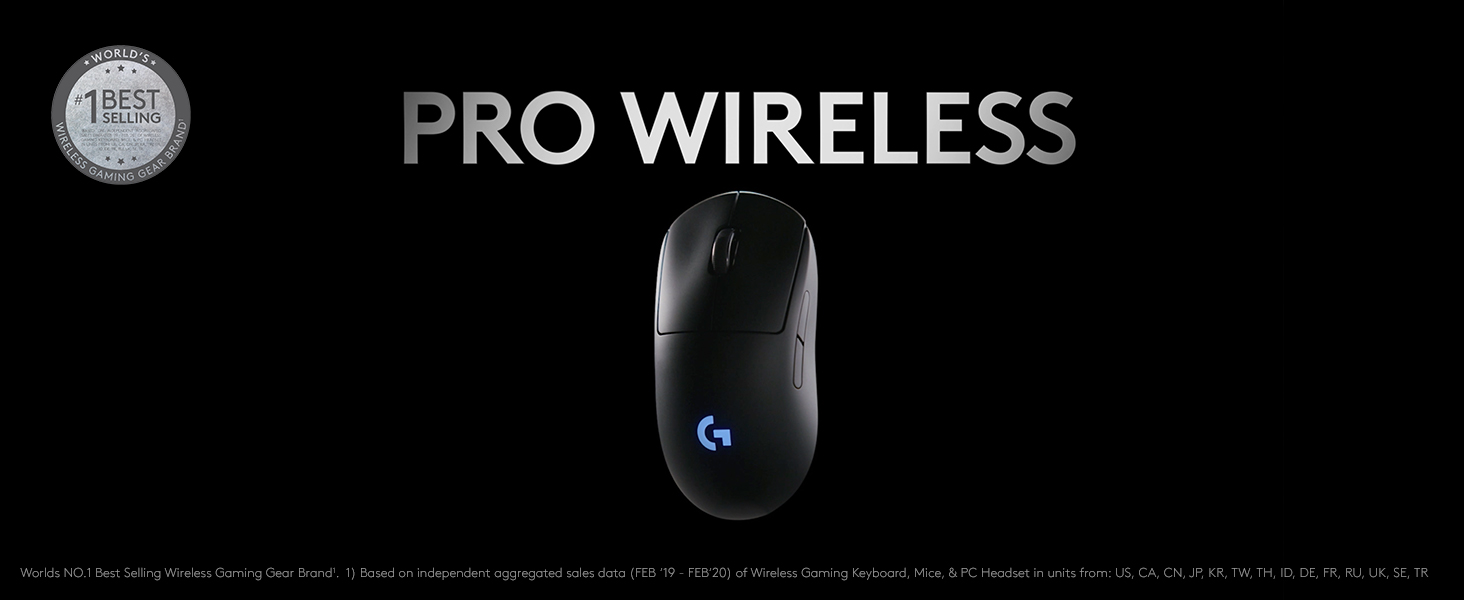
| Weight | 2.88 oz. |
| Connectivity | Wireless |
| DPI Settings | 25,000 |
While mouse drag is a common issue with wired models, most gamers refuse to buy wireless mice because they’re known to be slower. Logitech G Pro, however, is an exception that doesn’t compromise performance for its wireless capacity.
It has a premium optical sensor with a programmable 100–25,000 DPI. You can adjust all eight switches individually within this range.
With the LED lights on, the mouse retains battery for about 50 hours, which is about a week’s gaming use. It also works another 13 hours when you’re not using RGB.
At almost 1.5 x 2.5 x 5 inches, this model is perfect for gamers with various hand sizes resulting from those with a claw, fingertip, and palm grip.
Its pure PTFE feet make you feel like you’re sliding the mouse in the air.
Even if you prefer a lighter option, go for its Pro X version with 2.22 oz., resulting from an egg-shaped design and omitted side clickers. But remember that it also means a smaller DPI range and no RGB lights.
Pros
- No wireless latency
- Long battery life
- Lightweight
- All hand-size compatible
- Suitable for various grip styles
- Up to 25K DPI support
- RGB LED lights
- Ambidextrous shape
Cons
- Random stick clicks reported
4. Cooler Master MM710—Most Budget-Friendly
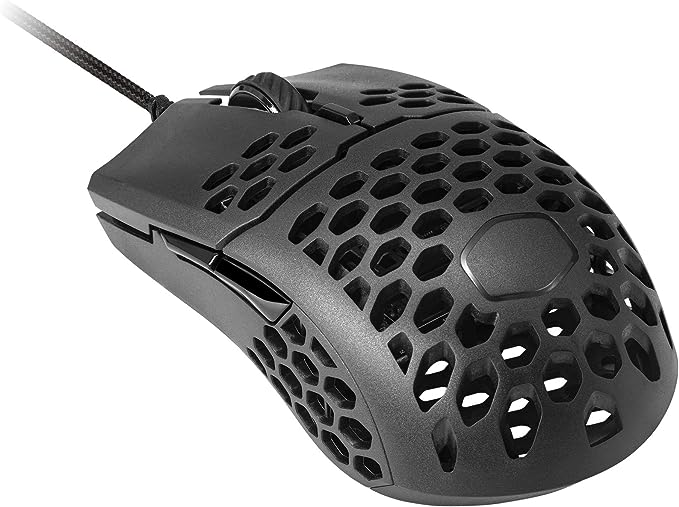
| Weight | 1.87 oz. |
| Connectivity | Wired |
| DPI Settings | 16,000 |
At only 1.87 oz., Cooler Master MM710 is the lightest gaming mouse you can get with a short budget. And the good news is, it won’t compromise durability or tech features for this.
The mouse features a 16K DPI optical sensor that can adjust its sensitivity in real time for a start. Combined with a 400 IPS tracking speed, 2mm LOD, and 1-ms response time, this feature leads to a brilliant companion for your competition.
As for the construction quality, you’ll get an ABS plastic body with dust and moisture-resistant perforations. Besides, the Omron buttons are solid, not to mention the ultra-weave cord, which is also devoid of cable pull problems.
This mouse has a round and wide shape, a common choice for big and small hands, and all three grip styles. Plus, its PTFE feet make it easy to move, similar to frictionless Hyperglide Skates.
But in general, if you’re around for an affordable quality mouse and don’t mind not getting RGB lighting, MM710 won’t let you down.
- Extra lightweight
- Instant DPI adjustment
- Smooth gliding
- Splash and dust-resistant coating
- All-compatible design
- Sturdy body
- Almost no delays
- Flexible drag-free wire
- Best value for money
Cons
- Not left-handed friendly
- Reports of wobbling buttons
5. FinalMouse Ultralight 2 Cape Town—Best for Small Hands
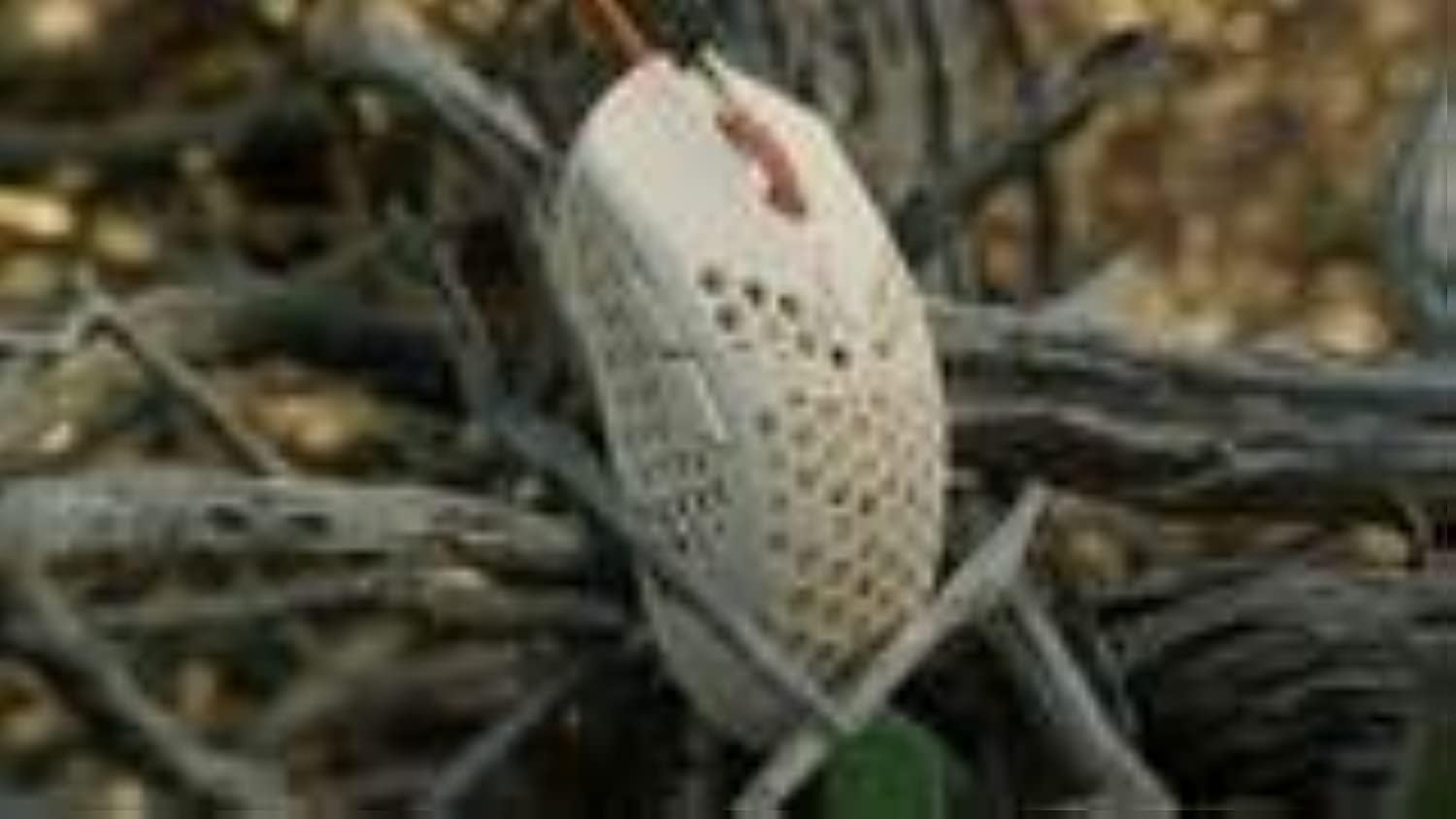
| Weight | 1.66 oz. |
| Connectivity | Wired |
| DPI Settings | 3,000 |
When it comes to having a lightweight feature, no product can beat this model.
While most gaming mice have a weight range of 2 to 2.5 oz., FinalMouse Ultralight 2 boasts a featherweight of only 1.66 oz. and is the lightest gaming mouse on this list.
This featheriness, however, comes as a trade-off to its size. With a 7x 5x 2.5-inches design, the mouse fits only small to medium palms. So, it can’t comfortably grip over 18cm hands unless you have a claw or fingertip grip.
Although it includes a latex Infinity Skin to make it thicker for bigger hands, remember that you’ll add a few more ounces by applying the cover.
The chassis is a rigid plastic with a honeycomb design. It also comes with a two-meter Parachute cable adding to its ease of use, lightness, and durability. You’ll also have a 4-year warranty to ensure its lifespan.
However, with a maximum DPI of 3K and a polling rate of 500Hz, this mouse might disappoint high-sensitivity seekers. Although you’ll get two side switches, there are no RGB effects in the mouse.
Pros
- Ultra-lightweight
- Quick and smooth movements
- Suitable for both lefties and righties
- Short clicks
- Four-year warranty
- A sturdy case and cable
- A foam fingertip grip included
Cons
- Supports up to 3000 DPI only
- Not for gamers with big hands and palm grippers
- No RGB lighting
Buying Guide: Choosing the Lightest Gaming Mice
Weight
Using a lightweight mouse helps serious gamers in many ways. First, it lets them move the pointer more quickly, becoming more reactive in the swift FPS battle games. Second, makes it easier to move the mouse to eliminate muscle fatigue after many gaming sessions. And most importantly, it improves your shooting adjustments.
Especially if you prefer low-sensitivity mice, a lightweight option can improve your accuracy because it takes less effort to mobilize it. But how light should a gaming mouse be? Any mouse under 3.5 oz. is considered lightweight, but if you want an ultra-light experience, those that range from 1.5 to 2.9 oz. will nail it.
Connectivity
The second important aspect to consider when choosing among the top lightest gaming mice is whether you want a mouse with cable connectivity. Both wired and wireless mice have their ups and downs, but corded ones are the most common choice of gamers.
One reason is the permanent connection where you won’t have to juice up a battery repeatedly. Besides, you won’t need to worry about the battery’s lifespan and base your decision on physical durability. And the more critical point is less input latency in corded mice.
Thankfully, some wireless mice such as Logitech G Pro and Razer Viper Ultimate on our list have addressed the issue by increasing the polling rate.
On the other hand, wired mice may be a subject of cord wear and tear or may hinder your movements due to the dragging issue. That’s why you need to choose a mouse with a long, lightweight, and flexible cable.
Hand Size and Grip Styles
Using a mouse is all about controlling it, and you won’t be able to control a mouse unless it matches your hand size, grip style, and handedness.
First, make sure the mouse is ambidextrous, round, or symmetrical if you’re left-handed. You may also want to check if there are side buttons on the right and the left side. Next, measure your hand size and make sure it conforms to the mouse dimensions. If your longest fingertip-to-wrist distance is less than 6.7 inches, your hands are small. And if it exceeds 7.7 inches, they’re big. Anything between is considered medium and will match most mice designs.
As a rule of thumb, an ideal mouse should measure at least two-thirds of your hand’s length and width. The third personal aspect to consider is grip style because a mouse with an unmatching grip may fly out of your hand during games, reduce your agility, or cause discomfort.
If you tend to rest your whole hand, including your five fingers and the palm on the mouse surface, you’re a palm gripper. If you mostly arch your two mouse fingers and the palm backside on it, you’re a claw gripper. Those who entirely avoid palm contact with the mouse and solely rely on their fingers to move the mouse are fingertip grippers.
It all comes down to your habits. Check which category you fall in and choose your lightweight gaming mouse accordingly.
DPI Settings
DPI (Dots Per Inch) is a valuable metric that determines your mouse sensitivity. It presents in numbers and indicates how much the cursor moves on the screen per inch you change the mouse position. Suppose you adjust the sensor’s DPI at 2000. In that case, your computer pointer travels 2000 pixels on the screen for every inch of motion.
The more the DPI number, the more sensitive it is to minor movements. But this doesn’t equal better performance.
It all depends on what type of game you’re playing. While high DPI mice let you aim with more precision, it’s hard to control the cursor in the zoom-in mode. So, it’s always better to go for options with DPI adjustment. The ideal model lets you change the sensitivity on the go, just like the Cooler Master MM710.
You can also consider the IPS value, the maximum speed at which a sensor can trace your hand motions. While it differs from DPI, it’s indicative of a better gaming mouse.
Polling Rate
Measured in Hz, the Polling rate is a metric that indicates how often your mouse declares its location to your OS.
The higher this rate, the less lag you’ll experience. It means there will be a slight delay between the time you move the mouse and when the pointer moves. A mouse with a 500Hz polling rate sends location signals to the PC 500 times a second or eight milliseconds.
In general, the higher the polling rate and the lower the click latency, the better a mouse for gameplay.
Feet
This point is about how easily you can slide the mouse on a surface, a determining factor in your gaming performance. Especially if you don’t like using a mousepad, this factor gains more relevance.
Try to choose between mice with Hyperglide technology or frictionless PTFE material at the bottom. They work well on almost any surface.
Buttons
When it comes to mouse switches, you should consider several aspects: How stable the buttons are, how fast they debounce (click latency), and how easy it is to press them down. You’ll also want to know how many buttons it has or whether it includes side clickers.
A good determinant for the buttons’ lifespan is to check their click rate, which is how many clicks they can handle before they become unusable. Logitech G Pro, for instance, is rated for up to 50 million clicks, while Glorious Model O claims to work up to 20 million.
Closing Thoughts
Among the five top lightest gaming mice in this review, our favorite light mouse goes to Glorious Model O, a superb gaming mouse with perforations that combines a brilliant sensor with quality switches, wire, and body.

